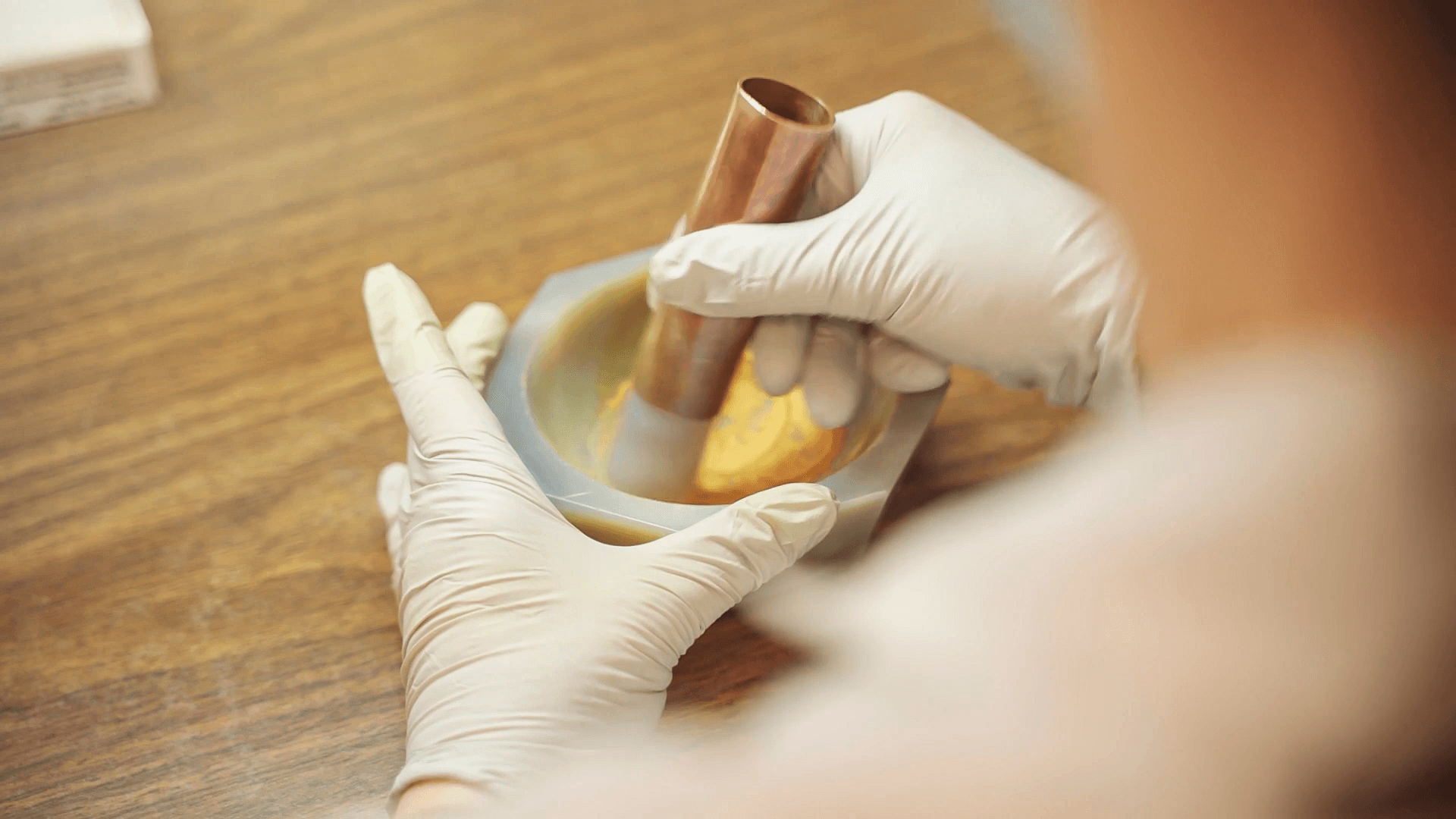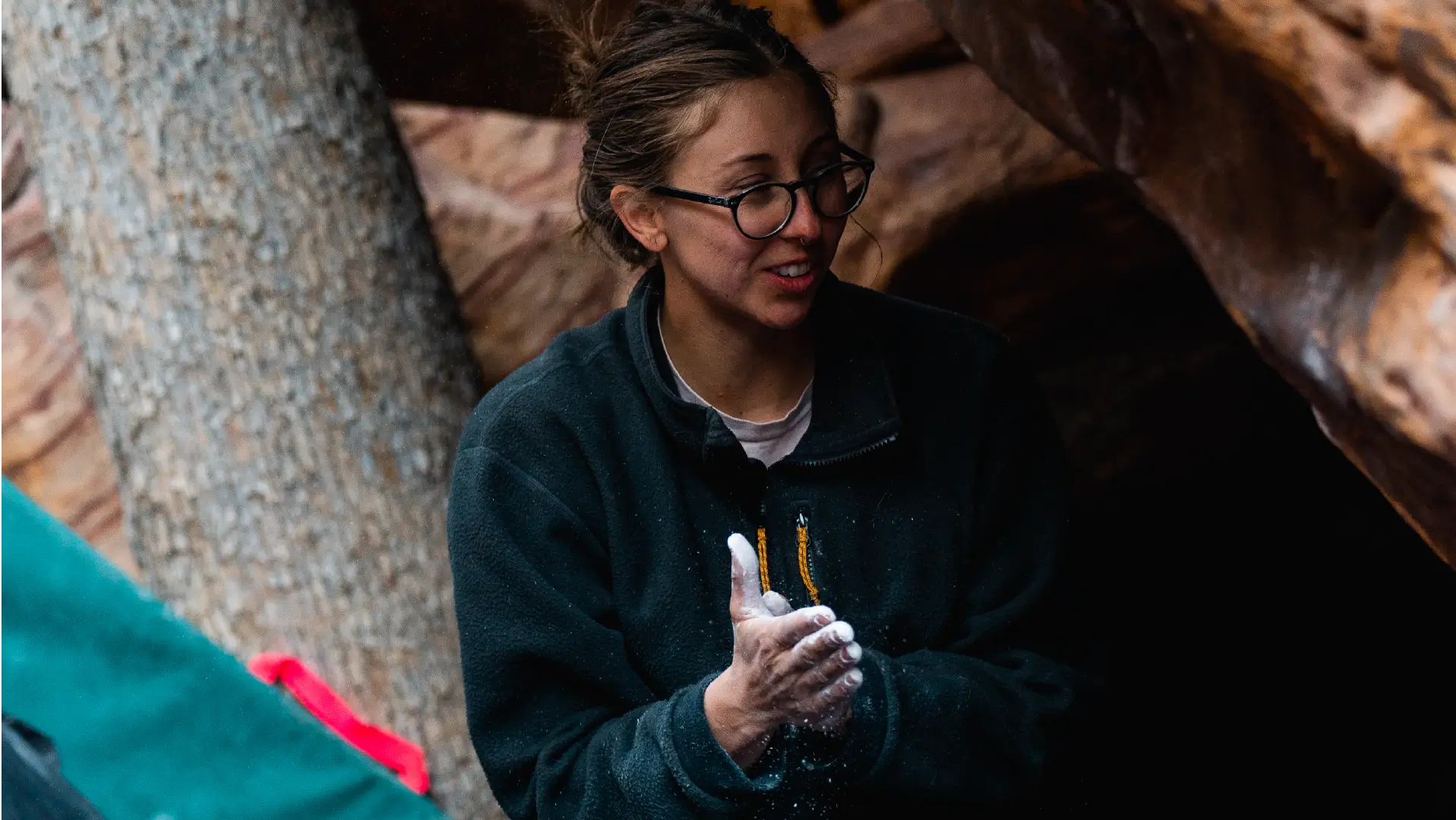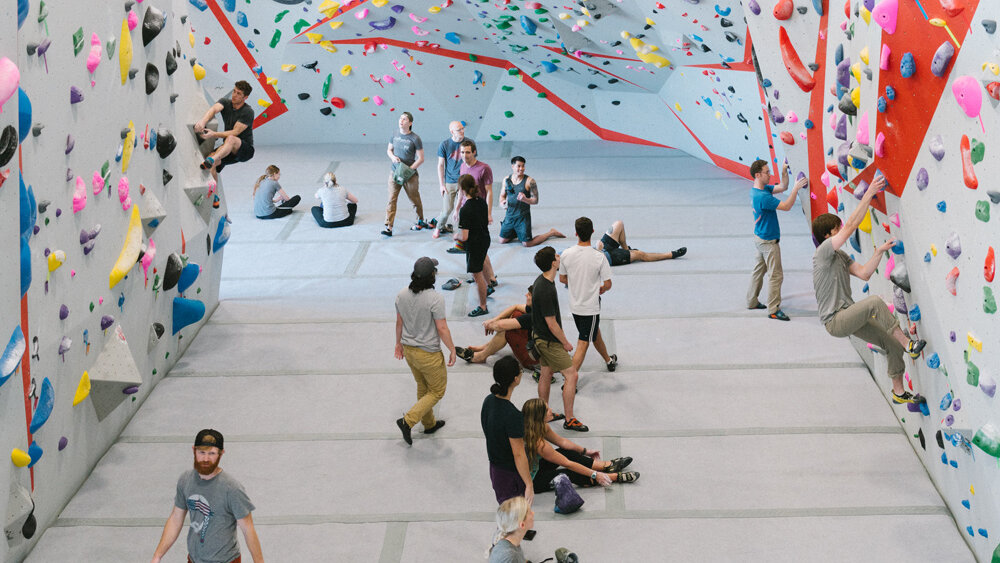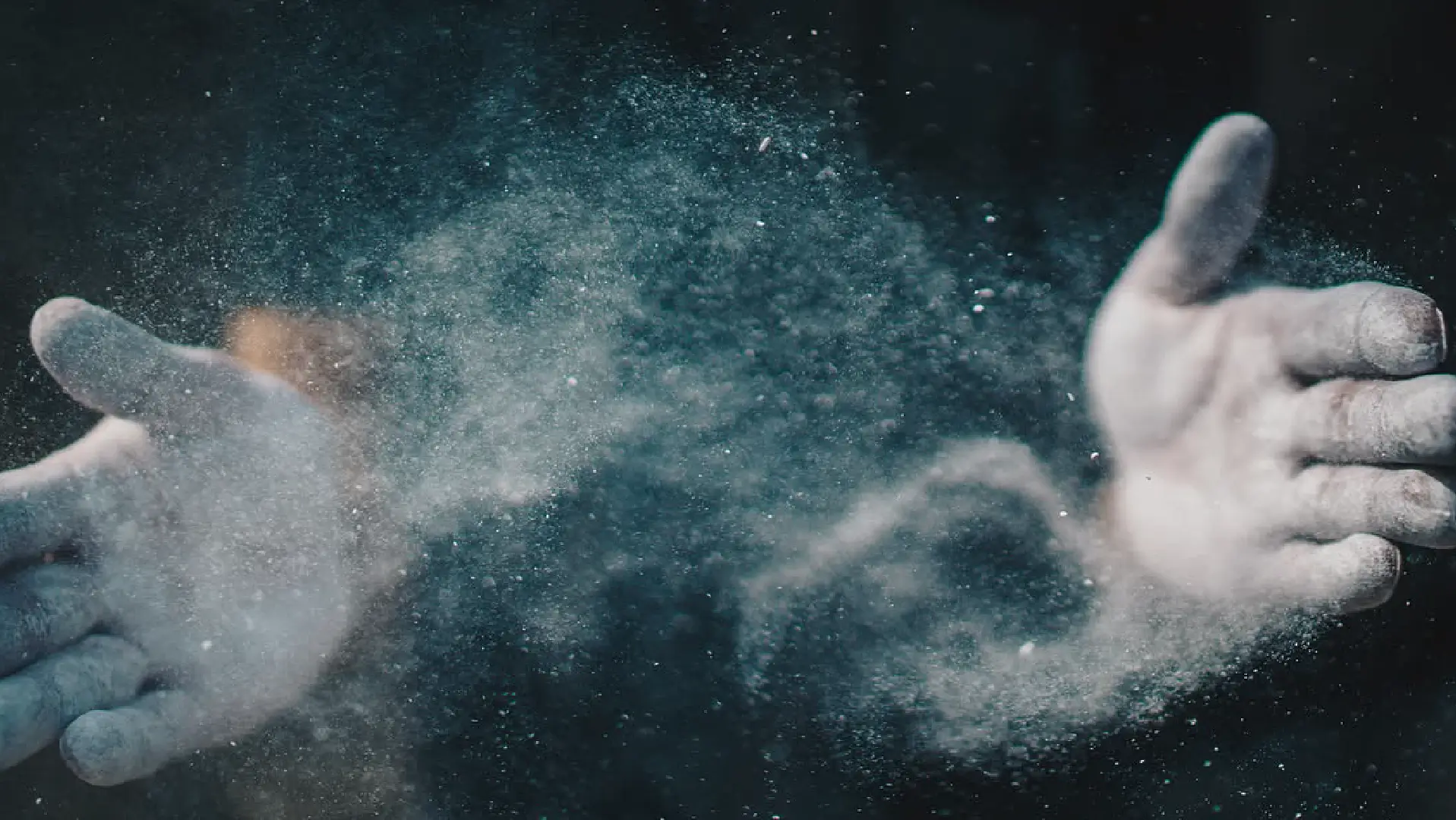“Virtually every rock climber relies on chalk for a better grip.” This underscores how vital chalk has become in the climbing community. Yet, many climbers wonder if this white powder swirling around in gyms could harm their health. The sight of a chalk cloud floating under fluorescent lights can raise questions about lung safety and skin health. Such concerns merit a closer look at what climbing chalk is made of, how it works, and how it may affect human well-being.
1. The Composition of Climbing Chalk
Climbing chalk, contrary to what the term might suggest, is not the same chalk used on blackboards. It is most commonly magnesium carbonate, often labeled as MgCO₃. In powdered or block form, this substance helps to absorb moisture from the skin. When fingers become sweaty, they can slip more easily off holds—especially in conditions of high humidity. Magnesium carbonate’s moisture-absorbing properties solve that problem, making it a must-have for countless climbers around the globe.
1.1 Types of Climbing Chalk
- Loose Chalk: The basic form, often sold in a chalk bag or refillable tub. It comes in granular or chunk form. It tends to produce a substantial amount of airborne dust, which can linger in poorly ventilated spaces.
- Block Chalk: A compressed version of magnesium carbonate. It breaks into smaller chunks when handled but starts off more compact, sometimes resulting in less dust during transport.
- Liquid Chalk: A mixture of magnesium carbonate with alcohol and other binding agents. It dries on the hands relatively quickly and tends to reduce the airborne particle load compared to loose chalk.
- Eco-Chalk: Some brands, like Flashed, have seawater chalk, which reduces the impact on the earth’s surface because it is not mined.
2. How Chalk Improves Grip and Performance
Chalk’s primary function is straightforward. By removing excess moisture, it improves the frictional force between fingers and climbing holds. This friction is crucial for both bouldering and roped climbing, where a confident grip can mean the difference between sticking a hold or peeling off the wall.
In addition, chalk can signal readiness and focus. Many climbers like to chalk up just before attempting a challenging sequence. This “ritual” can also have a psychological benefit—there is a sense of preparation that comes with patting the hands in a chalk bag. However, the physical benefits remain the key reason for widespread use.
3. Common Health Concerns: Respiratory and Skin Issues
Despite chalk’s popularity, some potential health questions persist. Two of the most commonly discussed are:
- Respiratory Irritation: Does inhaling chalk dust pose a serious health risk?
- Dermatological Impact: Does repeated contact with chalk dry out or harm the skin in the long term?
3.1 Respiratory Irritation
Climbing chalk is often classified as a nuisance dust rather than a toxic substance. Magnesium carbonate is not generally considered hazardous when inhaled in small amounts. According to the U.S. Occupational Safety and Health Administration (OSHA), there are permissible exposure limits (PELs) for particulate matter not otherwise regulated. Magnesium carbonate falls into this category. While these guidelines are designed for industrial settings where dust concentrations may be significantly higher, they offer perspective on general indoor air quality.
- OSHA Standard: For particulates not otherwise regulated, OSHA sets a limit of 15 mg/m³ as the total dust permissible exposure limit, and 5 mg/m³ for the respirable fraction, averaged over an 8-hour work shift.
- NIOSH and ACGIH: Other organizations like the National Institute for Occupational Safety and Health (NIOSH) and the American Conference of Governmental Industrial Hygienists (ACGIH) also provide recommended exposure limits (RELs) and threshold limit values (TLVs) in similar ranges.
A 2008 study, measured how much dust was in the air (called “particulate matter” or PM) in nine climbing gyms and compared it to the air in five normal sports halls (like a basketball gym). While they found the dust was higher than in other sports facilities, it remained below the official occupational safety limits in Germany and below the OSHA PEL for nuisance dust. However, certain cramped facilities with poor ventilation exhibited higher particle counts. While these elevated concentrations were still within generally accepted safety ranges, they approached the upper limit for comfort, indicating that individuals with pre-existing respiratory conditions (such as asthma) could experience irritation in such environments.
3.2 Skin Dryness and Irritation
Magnesium carbonate absorbs moisture not only from the environment but also from the epidermis. Over time, this can result in dry or cracked skin, especially around the fingertips. Some climbers report calluses forming more quickly or existing calluses hardening. While calluses can be beneficial for grip, overly dry skin can cause flaking, redness, or even open cracks.
For individuals with sensitive skin, certain chalk brands include fillers or fragrances that might trigger mild allergic reactions. Redness and itching have been reported when using flavored or scented chalk products. These fillers can vary from brand to brand, underscoring the importance of reading labels carefully before purchasing.

4. The Science Behind Chalk’s Safety Profile
Many official bodies, including health agencies in Europe and North America, consider magnesium carbonate to be relatively safe for incidental inhalation or skin contact under normal use conditions. In fact, magnesium carbonate is sometimes used in food and pharmaceutical products as an anti-caking agent and antacid. This is not to imply that inhaling large quantities of it is harmless. Rather, the existing data suggest that short-term or moderate exposure in a typical climbing scenario is not associated with severe health risks.
For instance, the European Chemicals Agency (ECHA) categorizes magnesium carbonate as having low acute toxicity when inhaled or ingested. Symptoms might include coughing or mild throat irritation if large amounts are inhaled, but systemic toxicity is unlikely at the levels encountered in a climbing gym. Excessive or chronic exposure, however, could raise concerns, especially in poorly ventilated settings. Therefore, controlling dust concentration through ventilation, filtration, and mindful chalk usage is the primary measure to ensure safety.
Learn more about Flashed’s research into chalk by checking out our Chalk Research Initiative with UBC.
5. Strategies to Mitigate Respiratory and Skin Risks
5.1 Ventilation Measures
In climbing facilities, ventilation is key. Proper air circulation helps disperse chalk dust quickly. Fans, open windows, or an HVAC system with good filtration can keep air quality within acceptable limits.
- Air Exchange Rate: Gyms can invest in systems designed to replace indoor air with fresh outdoor air multiple times per hour.
- Dust Collection Systems: Some venues install local exhaust ventilation (LEV) near high-traffic bouldering areas to pull airborne particles away from climbers.
Where possible, climbing on days or at times when fewer people are present can also help reduce personal exposure. By avoiding peak hours, climbers may experience less overall dust in the air.
5.2 Choice of Chalk
A switch to liquid chalk or denser chalk is frequently recommended for those concerned about airborne dust. Liquid chalk, which combines magnesium carbonate with an alcohol solution, dries on the hands and typically creates less airborne residue. It may not need to be reapplied as often, although some climbers still supplement with loose chalk after liquid chalk dries. Denser chalk blocks require a bit more effort to break down, but they often produce fewer airborne particles than ultra-fine loose chalk.
5.3 Skin Care Practices
Prolonged contact with chalk can cause dryness, so moisturizing after a climbing session can help prevent cracking and peeling. Many climbers find success with hand balms specifically designed for climbing. These products frequently contain natural oils and ingredients like shea butter or beeswax to replenish lost moisture. Care should be taken to apply these moisturizers after climbing rather than immediately before or during the session to avoid slippery fingers.
Some individuals also opt for nightly skincare routines involving heavier-duty creams or lotions. Others prefer climbing or finger tape to protect sensitive areas prone to splitting or cracking. The type of tape and application method can vary, but covering problem spots before they worsen is often beneficial.

6. Specific Actionable Recommendations
- Choose a Gym With Adequate Ventilation
Seek out climbing facilities that demonstrate good air circulation. Look for visible fans, open windows, or air filtration systems. When in doubt, inquire with gym staff about their ventilation protocols. - Opt for Liquid or High-Density Chalk
Liquid chalk drastically reduces dust clouds. High-density block chalk is also a good alternative to ultra-fine loose chalk. Consider experimenting with different formulations to find one that balances grip efficacy and minimal airborne residue. - Limit Over-Chalking
Dipping hands in chalk bags too frequently can produce unnecessary dust. Apply a moderate amount of chalk, and reapply only when the grip noticeably diminishes. A mindful approach often yields the same friction benefit while reducing airborne powder. - Establish a Post-Climb Skin Care Routine
Wash hands thoroughly after a session to remove chalk residue. Follow with a hydrating lotion or balm designed to help the skin recover from moisture loss. Regular care can help prevent painful cracks and keep the skin on the fingers healthy. - Check Chalk Ingredients
Some chalk products contain fragrances or additional drying agents. Reading labels helps avoid ingredients that might trigger allergic reactions or excessive dryness. Many brands now advertise “pure” magnesium carbonate with no extra fillers.
7. Myth-Busting: Common Misconceptions About Climbing Chalk
7.1 “Chalk Dust is Like Industrial Chemicals”
This is not accurate. Magnesium carbonate lacks the hazardous properties associated with many industrial chemicals. While inhaling any dust is not ideal, comparisons to potentially carcinogenic or toxic dusts (e.g., silica dust in mining) are overstated.
7.2 “More Chalk Always Improves Grip”
Friction is indeed boosted by removing sweat, but overuse of chalk can become counterproductive. Layers of excess chalk can build up on the skin, reducing tactile sensitivity and even causing subtle slipping. Moreover, repeated chalking saturates the environment with dust, creating potential respiratory concerns for everyone at the gym.
7.3 “Chalk Allergies are Extremely Common”
True allergic reactions to pure magnesium carbonate are relatively rare. In many reported cases, the culprit is an added filler or fragrance in the chalk. Switching to a filler-free product often resolves symptoms.
8. The Role of Psychological Comfort
Climbing is as much a mental challenge as a physical one. Chalk can play a role in psychological assurance—there is an element of confidence that arises from chalking up. This effect is hard to quantify scientifically, but many climbers feel an immediate sense of readiness after a fresh application of chalk. The same effect can be observed in other sports; gymnasts and weightlifters rely on chalk for grip, and they exhibit a similar chalking “ritual.”
Nevertheless, from a purely physiological standpoint, chalk does not necessarily make an individual climb harder or better if the skin is already dry. The mental advantage, however, might be enough to justify its usage. Confidence at the crux of a climb can be the final push needed to send a route successfully.
9. Indoor vs. Outdoor Considerations
9.1 Indoor Gyms
Indoor climbing environments are enclosed, and dust circulation depends heavily on ventilation systems. The chalk residue may settle on mats, climbing holds, and even on gym floors, only to be stirred up again by foot traffic or air currents. This repeated recirculation can amplify exposure in some settings, reinforcing the importance of well-maintained ventilation.
9.2 Outdoor Crags
In outdoor settings, natural air flow typically dissipates chalk dust quickly. However, there may be environmental concerns related to chalk marks on rock surfaces or in protected areas. Some climbing zones require or request specific types of chalk or ask climbers to brush excess chalk off holds. In terms of personal health, outdoor climbing usually poses less of a respiratory concern due to open-air dispersion.
10. Delving Deeper: The Research Landscape
More scientific data continue to emerge on the composition and effects of climbing chalk. While there has been extensive research on occupational exposure to magnesium carbonate and other particulates in industrial settings, specific research on climbing gym environments is still growing. Some studies are focusing on the correlation between chalk usage and air quality indices, measuring particulate matter (PM) levels, carbon dioxide (CO₂) concentrations, and humidity in various gyms.
Additionally, repeated use of chalk can strip the skin’s natural oils. Over time, this may compromise the skin barrier, particularly on the fingertips. Climbers using chalk are likelier to experience cracks and minor spilts in the skin. However, these issues can usually be managed with proper hand care routines, including the use of moisturizers and appropriate rest days.

11. Moving Forward: Balancing Performance and Health
Chalk is a vital tool for most climbers, especially those tackling difficult routes or problems. Its ability to enhance grip cannot be overstated, but its potential to cause dryness or mild respiratory irritation should not be ignored. Striking a balance between chalk usage and health considerations involves:
- Staying informed about the properties of different chalk types.
- Being mindful of gym conditions, especially air circulation.
- Practicing good skin care.
- Recognizing any personal sensitivities (whether respiratory or dermatological) and taking appropriate measures.
As climbing continues to gain popularity worldwide, more research is expected to shed light on how chalk interacts with human health in typical climbing scenarios. Many gyms are already adopting dust-reduction strategies such as installing advanced ventilation systems and encouraging climbers to use liquid chalk or high-density blocks. Meanwhile, chalk manufacturers are innovating with less dusty blends and packaging solutions that minimize spillage.
12. Conclusion
Climbing chalk, primarily composed of magnesium carbonate, generally poses minimal risk when used in standard climbing contexts. It excels at absorbing sweat and improving friction, which are crucial for successful ascents. Existing health guidelines classify magnesium carbonate as a relatively safe substance with a low toxicity profile, particularly at the levels climbers typically encounter.
However, mild irritations can occur, ranging from respiratory discomfort in poorly ventilated gyms to dry and cracked skin on the hands. Each climber can take proactive steps to limit these effects—selecting denser or liquid chalk, maintaining good hand care, checking for ventilation, and moderating the amount of chalk used. While magnesium carbonate dust is not comparable to industrial chemicals in terms of toxicity, consistent exposure in enclosed spaces can cause irritation, especially for those with sensitivities.
Optimal strategies revolve around knowledge, moderation, and environmental awareness. Gyms that prioritize air circulation see fewer complaints, and climbers who tailor chalk usage to their needs often experience improved comfort. Whether bouldering on tough indoor problems or tackling multi-pitch routes outdoors, chalk is here to stay as a trusted ally in the climbing world. Its benefits for grip and mental focus remain invaluable, but a responsible approach ensures a healthier, more enjoyable climb for everyone involved.


